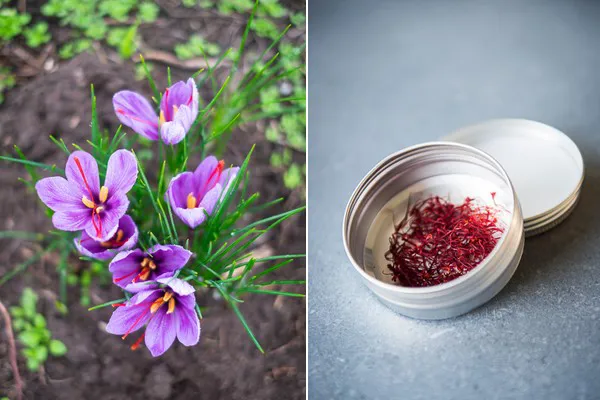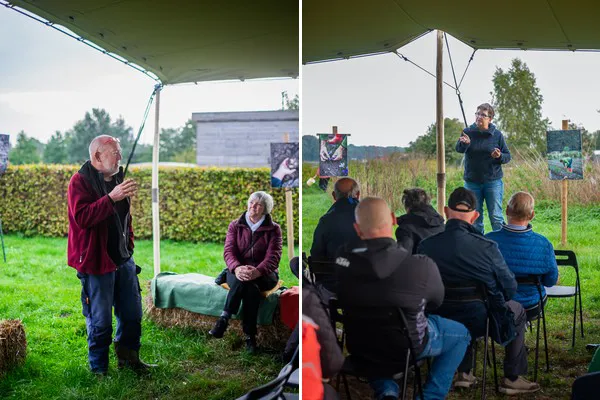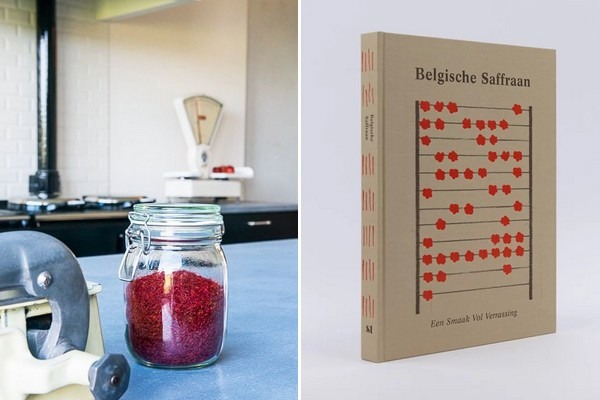It is not a natural year for the Belgian saffron harvest. The 'red gold', most of which is imported from the Middle East, can also be harvested in Antwerp's Kempen region around this time of the year, it has been harvest for last 11 years. "Only this year the harvest is completely different from other years," says Linda Van den Bulck, who runs a saffron farm, Belgian Saffron, in Morkhoven with her husband Marc. "In the end, the yield on our old field is still reasonable, despite a terrible spring. With colleagues, however, it is similar."

The pair started growing saffron in 2013 after a visit to Brittany. There, they came into contact with a psychologist who had started a saffron farm, after which they were inspired. And where things initially fell apart completely with the French psychologist, Linda, and Marc's first harvest was still a success. "We have now spent 11 years in saffron and this year proves once again that no two years are alike. Of course, you are always dependent on the weather, so it always remains to be seen what the new harvest will look like. Only this year, therefore, we really had an unseasonable spring, which made us fear for the new flowers. They just didn't get going."
"In the end, we still had a reasonable yield in our old field," Linda continues. "Only it was definitely less than other years. That mainly has to do with the wet and cold springs. Then, in June the flower buds formed, but even then the weather was not ideal for flowering. Given the climate changes, we are always looking for creative solutions. We are therefore also looking at staggering the number of bulbs planted. Normally you plant them in summer, but now we planted them in early September and they are giving richly. It makes us think whether we shouldn't do this better every year, as we almost always have a late autumn these days. Besides, the spread is also a bit more comfortable for us in harvesting. We no longer have to pick tens of thousands of flowers in a day." Simply put, saffron is the dried pistils of the saffron crocus and these have to be picked manually from the flowers, making it a very intensive harvest. Linda and Marc have now started around 5 October and expect to continue for another week or two.

Not raking in euros with 'red gold'
Looking at the demand, the entrepreneur is still positive. "This is also because there is little product that is comparable. I see imported products as a totally different business. It may be considerably cheaper, but that mass production is totally unlike what we offer in terms of taste and quality. In addition, we see that many people come here to start up their own businesses, but they also drop out fairly quickly. Surely there is an image of saffron, which encourages fantastic stories. People think you can wheelbarrow euros in with the 'red gold'. Only every year it is a matter of waiting to see what the yield gives. It is very intensive work and you have to watch how you use the land. Moreover, finding outlets is not so obvious, so many are quickly rethinking their plans. It's all no fairy tale. You have to have a passion for it and that's how we carry on."
It also means that the grower couple, with Belgian Saffron, has now been able to hold on well to its accumulated customer base. "We watch very much for quality. Especially in years like these, it is very important to still deliver good quality, otherwise people drop out. So this is now recognized by people who are consciously looking for this." Sales are mainly in private individuals, but partly also chefs, chocolatiers, and bakers. "We wouldn't have it any other way either. Sometimes we suddenly get a request for 10g and once one has worked with it, they don't want anything else. That could be the star chef of the restaurant in town, but just as easily the grandmother around the corner who uses it for her rice pudding. One has to choose for the taste and not the price. Leon Mazairac, for instance, dropped by the BinnensteBuiten program just last year. He knew exactly how to appreciate the saffron, so those are the incredibly beautiful sides of the trade," Linda laughs.

Belgian Saffron - A Taste Full of Surprise
It also prompted them to release a book, 'Belgian Saffron - A Taste Full of Surprise', around their saffron in 2013 for the 10th anniversary. "We wanted to introduce the general public to our passion. In it, Marc discusses saffron cultivation and, in addition, we have compiled some 50 recipes, with great stories, into what we think is a beautiful book. Several chefs have collaborated on this to really bring saffron to life. I have also shared dozens of recipes myself, which are feasible for everyone so that people know what you can do with the beautiful spice. It is not obvious to everyone, but there are very many possibilities," she concludes.
For more information:
Belgian Saffron![]()
Leefdaalstraat 14
2200 Morkhoven, Belgium
+32 496 07 56 36
[email protected]
www.belgischesaffraan.be
